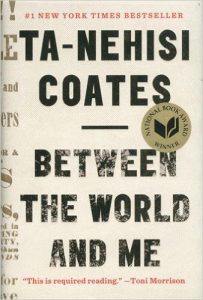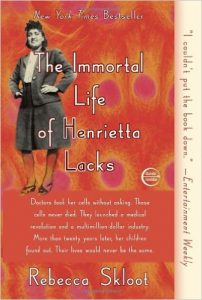When I showed up to the hotel, I wasn’t prepared for the motley crew I’d encounter.
It was two weekends ago, and I was at the National Council of Teachers of English annual convention. There, scarf-wearing English teachers bustled through the lobby, toting bags of YA novels, and tripping over tattoo-covered attendees of another conference: the Old School Tattoo Expo. It was a crowded space, to say the least.
And then the cheerleading competition showed up.
Though I never got to see a love connection, I did experience some predictably awkward elevator rides of groups who seemingly had nothing in common. A week later, I’m still thinking about those awkward rides, and the lesson they offer us:
Our classrooms can mirror those awkward elevator rides if we aren’t careful.
How often do we accept that same awkwardness from our students? We provide a topic or text for discussion, and we get crickets. Or, a few loud voices engage in debate while others avoid eye contact.
As English teachers, we have an opportunity to tackle controversial topics and help our students listen to one another. Those rich exchanges can’t happen, though, if our students make assumptions about one another based on the things that mark them as part of certain groups–their scarves, tattoos, and JoJo bows (figuratively speaking, of course).
Many of our students are hesitant and guarded, and it makes sense why: it’s not easy to share ideas if you’re certain no one gets you.
If we truly want to move from politely awkward conversations to challenging ones, we need to create spaces where our students can connect with one another and practice pushing themselves past hesitation. They don’t need to be kumbaya-singing besties. But deliberate work is necessary if we want them to authentically communicate with one another.
Here are five ways we can help students engage each other in conversation.
1. Show students, by example, how to share risky ideas.
Last year, when discussing a police shooting with students, I shared my struggles: my deep concern for the incidents of police brutality in our nation, and that I’m also married to a police officer. Sharing my conflict opened the door for students to share theirs as well. And though not everyone agreed, we moved past assumptions and into productive conversation.
2. Do–and share–lots of low-stakes writing.
Many students haven’t had opportunities to develop their thinking about controversial issues. Notebook writing can give them a low-stakes opportunity to do just that. Students need to test ideas in notebooks, and puzzle through their answers to questions. And then they need to share–sometimes with a partner, and sometimes with a group.
3. Move students’ seats. And do it often.
I think students are young adults who can choose their own seats, but moving them around, and pushing them to work with new people, can help break down barriers. They can return to seats they choose, but it is good for them to move for part of the period.
4. Study texts that contain multiple perspectives.
Providing credible, quality texts with multiple perspectives gives students mentors for their discussions. A hesitant student might chime in, too, if you add a text from a voice that might not be present in the discussion otherwise. It is tricky when I have a strong opinion (and it’s rare that I don’t), but by providing students with several texts that look at an issue through different lenses, we are opening the door for richer, more inclusive conversation.
5. Provide a space for many different types–and sizes–of discussion.
The easiest way to get more comfortable talking is with practice: pairs, small groups, whole groups, rotating groups. Sometimes those discussions need to be teacher guided, and sometimes student led. Sometimes they need discussion protocols, and sometimes they need to be free form. Different students will respond better to different types of experiences, but all need to practice talking often–daily!–about topics that matter to them if we expect them to engage fully.
It’s not easy to help students find and use their voices. But we can start by creating classrooms that give them chances to practice. By understanding their differences, and learning to see that each unique experience is valuable, students can move beyond awkward, Holiday-Inn elevator conversations toward, engaged and complex ones.
 Hattie Maguire (@teacherhattie) hit a milestone in her career this year: she realized she’s been teaching longer than her students have been alive (17 years!). She is spending that 17th year at Novi High School, teaching AP English Language and AP Seminar for half of her day, and spending the other half working as an MTSS literacy student support coach. When she’s not at school, she spends her time trying to wrangle the special people in her life: her 8-year-old son, who recently channeled Ponyboy in his school picture by rolling up his sleeves and flexing; her 5-year-old daughter, who has discovered the word apparently and uses it to provide biting commentary on the world around her; and her 40-year-old husband, whom she holds responsible for the other two.
Hattie Maguire (@teacherhattie) hit a milestone in her career this year: she realized she’s been teaching longer than her students have been alive (17 years!). She is spending that 17th year at Novi High School, teaching AP English Language and AP Seminar for half of her day, and spending the other half working as an MTSS literacy student support coach. When she’s not at school, she spends her time trying to wrangle the special people in her life: her 8-year-old son, who recently channeled Ponyboy in his school picture by rolling up his sleeves and flexing; her 5-year-old daughter, who has discovered the word apparently and uses it to provide biting commentary on the world around her; and her 40-year-old husband, whom she holds responsible for the other two.


 Last year I participated in a book study at the
Last year I participated in a book study at the  Step 1: Expand Our Horizons
Step 1: Expand Our Horizons Rick Kreinbring teaches English at Avondale High School in Auburn Hills, Michigan. His current assignments include teaching AP Language and Composition and AP Literature and Composition. He is a member of a
Rick Kreinbring teaches English at Avondale High School in Auburn Hills, Michigan. His current assignments include teaching AP Language and Composition and AP Literature and Composition. He is a member of a  It’s been a couple of weeks since school let out for the summer. I’ve tackled a few projects, read a book or two. And so, of course, I’ve started to think about next year.
It’s been a couple of weeks since school let out for the summer. I’ve tackled a few projects, read a book or two. And so, of course, I’ve started to think about next year.  Two years ago my students really dug into Ceremony, by Leslie Marmon Silko. It was the most discussed novel, followed by Atwood’s The Handmaid’s Tale. Not so this year. Ceremony was roundly criticized by almost all of my students, while Handmaid’s was lauded.
Two years ago my students really dug into Ceremony, by Leslie Marmon Silko. It was the most discussed novel, followed by Atwood’s The Handmaid’s Tale. Not so this year. Ceremony was roundly criticized by almost all of my students, while Handmaid’s was lauded.